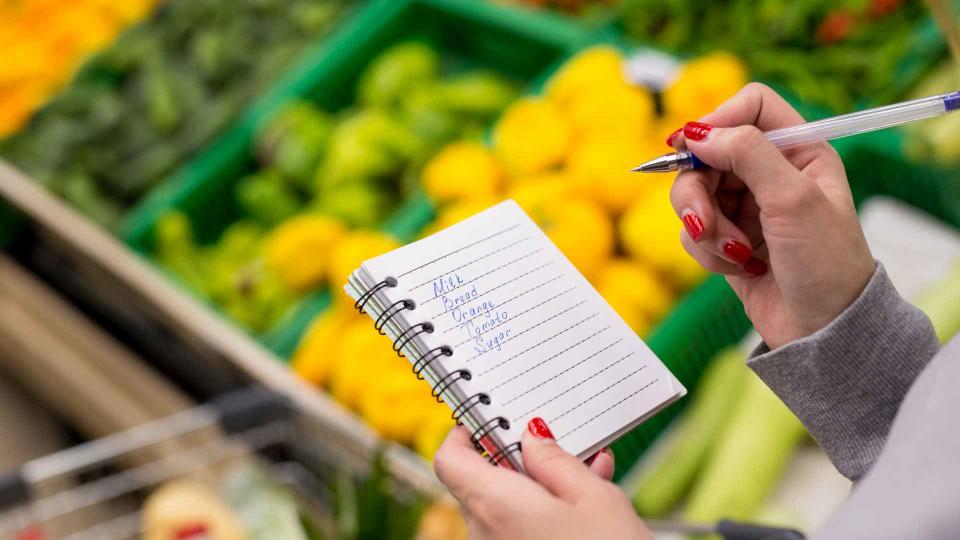Food Inflation: Why Economists Believe Food Costs Will Only Keep Going Up

Recent studies and reports highlight a concerning trend: the impact of climate change on rising food prices both globally and in the U.S. With food inflation already squeezing Americans’ wallets, the belief of scientists and economists that the trend will continue over the next decade and beyond is not welcome news.
Explore More: I’m a Frugal Shopper: 4 Items I Always Buy Secondhand To Save Money
Find Out: How To Get $340 Per Year in Cash Back on Gas and Other Things You Already Buy
Here’s why economists believe food costs will only keep escalating.
Global Trends
Globally, rising temperatures are expected to increase food price inflation by between 0.9 and 3.2 percentage points annually by 2035, according to a new study from climate scientist Maximilian Kotz and economists with the European Central Bank.
Unfortunately, that same global warming will cause a smaller increase in overall inflation — between 0.3 and 1.2 percentage points — resulting in families needing to spend a greater proportion of household income on food, negatively impacting their bank account and ability to get food.
Trending Now: 10 Things Frugal People Always Buy at Yard Sales To Save Money
According to the study, price inflation impacts countries worldwide — no matter their economic status. However, it’s especially troubling for low and middle-income countries, especially in Africa, where large populations are dependent on rain-fed agriculture.
Climate change affects prices through direct impacts on agriculture but through secondary effects like disruptions in transportation and logistics critical for food distribution.
Paul Ekins, an economics and environmental policy professor at the University College London Institute for Sustainable Resources, said the study’s findings weren’t surprising per a Green Central Banking report, which publishes the most current news and research regarding how central banks respond to climate change.
“It’s very hard to adapt to some weather effects that we’ve been seeing, especially floods and drought following one after the other,” Ekins told Green Central Banking. “The world is already warmer than 1.5ºC on average, which increases extreme weather events and, in turn, inflation. I’m afraid we’re going to see much more of it. And I’m afraid that it’s going to be very destabilizing for the societies in poorer countries.”
U.S. Specifics
In the United States, specifically, significant price hikes have been recorded in recent years. From 2021 to 2022, U.S. retail food prices saw an 11% increase — the largest annual rise in over four decades, according to information gathered by the U.S. Government Accountability Office. As a point of comparison, from 2013-2022, retail food prices only increased an average of 2% per year.
Influencing these changes are factors such as global trade disruptions, plant and livestock disease, economic pressures stemming from the pandemic and the Russia-Ukraine conflict, and last but not least, climate-induced weather events. These dynamics have disrupted our food supply and higher prices across various food categories.
2024 U.S. Food Price Trends
The U.S. Department of Agriculture forecasts for 2024 that some food-at-home prices will continue to rise.
For example, beef and veal prices are expected to rise by 3.3% due to tight supply and strong demand. Prices for poultry and eggs both show potential for increase, depending on the impact of factors like the most recent Highly Pathogenic Avian Influenza outbreak. Additionally, prices for fresh fruits are predicted to increase by 0.4 percent, and prices for fresh vegetables are predicted to increase by 1.1 percent.
Long-Term Predictions
According to the study, not only could the cost of food increase globally from 1.5% to 1.8% annually by 2035, but also, as climate change worsens, the numbers could increase up to 4%.
“These numbers that we’re talking about, they’re not kind of a one-off event,” said lead author of the study, Kotz, as reported by Green Central Banking. “These are impacts that we’re projecting from the sort of persistently higher temperatures that we’re likely to experience in the future. There are going to be future conditions which are going to be persistently bad from the perspective of food prices and inflation.”
More From GOBankingRates
This article originally appeared on GOBankingRates.com: Food Inflation: Why Economists Believe Food Costs Will Only Keep Going Up

 Yahoo Finance
Yahoo Finance 